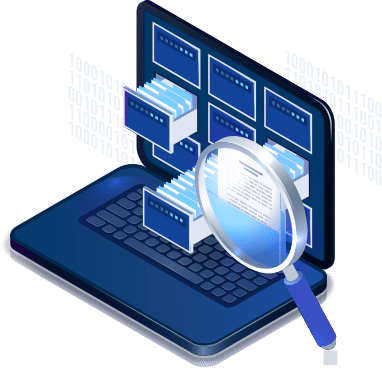The Impact of Data Quality on Financial System Upgrades
Imagine losing 31% of your revenue due to poor data quality. For financial services, this isn’t just hypothetical — it’s a harsh reality that demands immediate action.
The financial services industry relies on data for decision-making, yet many organizations are struggling with significant data quality issues that cost them dearly.
As regulatory demands intensify, technology becomes more advanced, and data volumes grow exponentially, maintaining high data quality throughout system upgrades and migrations is more important than ever. Failure to do so will result in flawed financial reports, increased operational risks, and significant revenue losses. This means that companies in the financial services industry need a better approach to data quality management and governance.
The Importance of Data Quality in Financial Services
Accurate and reliable data leads to accurate and reliable analyses and decision making. Poor data quality leads to flawed financial reports, increased operational risks, and potential legal repercussions.
That’s the surface level explanation of why data quality is important in any sector, including financial services.
But if we take a closer look at the financial services industry, it is obvious that data quality will make or break many organizations in the years to come. Here’s four reasons why:
- Regulatory Requirements: New regulations are being introduced that directly affect the way financial institutions manage data. EU’s Markets in Crypto-Assets (MiCA) regulation, the expansion of California Privacy Rights Act (CPRA), and Canada’s implementation of Open Banking all will require you to focus on data quality and how you manage it in your organization.
- Technological Advancements: AI, machine learning (ML), blockchain, and other advanced technologies are increasingly being introduced in financial services, and that adds multiple layers of complexity to how data flows between different financial systems. Accurate, reliable, and unbiased data is the foundation for the successful implementation of these technologies.
- Data Volume and Variety: Mobile banking, fintech integrations, and global transactions, all result in large volumes of data that requires robust systems capable of handling diverse and large datasets.
- Globalization: As financial institutions operate on a global scale, they must integrate and synchronize data across multiple jurisdictions and currencies. This adds further complexity to their systems and warrants an increased focus on data quality.
With all the above reasons, you’d think that financial services organizations put extra emphasis on data quality. Yet, 77% of companies have data quality issues that affect their performance. That’s because every time they upgrade their systems and migrate data, there are unique challenges that need to be addressed.
Challenges of Maintaining Data Quality During System Upgrades
When transitioning to new systems and migrating data, financial services organizations often have to deal with inconsistent data formats and legacy data architecture. 49% of data professionals cite this as a significant obstacle that makes it difficult to maintain data quality.
Also, the process of data migration introduces risks such as data loss, duplication, or corruption. Without rigorous data validation and cleansing before upgrading, the new system may inherit these issues. The lack of data standards and proper documentation, identified as major challenges by 58% and 56% of data professionals respectively, further complicates system upgrades and data migrations.
As companies push for modernization, they initiate data quality efforts in response to these challenges. While it’s okay to tackle challenges as you come across them, it is always better to have a strategic approach to data governance to address pre-upgrade, during-upgrade, and post-upgrade challenges. Here are some of the common challenges you will come across and how to address them:
| Stage | Challenge | Solution |
| Pre-Upgrade Challenges | Data Decay: Over time, data becomes outdated or irrelevant. This is especially problematic in legacy systems where data may not have been regularly updated or validated. | Data Profiling and Cleansing: Conduct thorough data profiling to identify issues such as data decay, inconsistencies, and outdated information. Use data cleansing tools to correct these issues before migration. |
| Legacy System Limitations: Many financial institutions operate on legacy systems that were not designed to handle modern data requirements, leading to compatibility issues during upgrades. | Standardization: Implement data standards across all systems to ensure consistency in formats and practices. | |
| Inconsistent Data Formats: Different systems often use varied data formats, which makes it difficult to ensure consistency when migrating to new platforms. | ||
| During-Upgrade Challenges | Data Migration Risks: Migrating data from old systems to new ones is fraught with risks, including data loss, duplication, and corruption. Without careful planning and testing, these issues severely impact the new system’s functionality. | Rigorous Testing and Validation: Test data migration processes extensively to identify and resolve issues before full implementation. Validate data at every stage. |
| Integration Difficulties: Integrating data from multiple sources can lead to misalignment, where data from different systems doesn’t synchronize properly. | Data Governance: Establish a data governance framework to guide the migration and integration process. | |
| Potential for Data Loss: During the transition, there’s a significant risk of losing crucial data, especially if proper backup and recovery procedures are not in place. | Versioning and Backup Plan: Establish a regular, automated backup schedule that stores critical data in multiple locations – both on-premises and cloud-based. Build version control into these backups so you can retrieve data from specific points in time. This will help you minimize the risk of data corruption affecting the entire dataset. | |
| Post-Upgrade Challenges | Ensuring Data Consistency: After the upgrade, it’s essential to ensure that the data across all systems remains consistent, avoiding discrepancies that could affect decision-making and operations. | Continuous Monitoring: Implement ongoing data quality monitoring to detect and address issues in real-time. This includes setting up automated alerts for data discrepancies and regular audits. |
| Accuracy of Data: Post-upgrade, there may be lingering issues with data accuracy due to errors during migration or integration. Continuous validation and cleansing are required to maintain data quality. | Data Quality Tools: Use advanced data quality tools to maintain accuracy, consistency, and completeness of data in the new system. These tools can automate many aspects of data management, reducing the risk of human error. | |
| Ongoing Data Quality Monitoring: To ensure long-term success, organizations need to implement ongoing monitoring processes to detect and correct data quality issues as they arise, preventing future problems and maintaining system integrity. | Training and Documentation: Provide training for staff on the new systems and data management practices. Ensure comprehensive documentation is available to support ongoing data quality efforts. |
To make sure that data remains accurate, consistent, and reliable throughout the upgrade, you need advanced tools and platforms to automate data profiling, cleansing, and standardization processes. Besides a data governance framework, you will need tools to help in the following areas:
- Automation: Automation reduces human error and ensures that data governance policies are consistently applied across all systems. You can automate data profiling and standardization through Data Ladder, and access control and lineage tracking through SAP Master Data Governance.
- Integration Tools: Data integration platforms help to align data from different sources and migrate them to new systems. You can do migration and integration through tools like SnapLogic.
- Continuous Monitoring: Data quality management tools offer continuous monitoring capabilities so any issues can be quickly identified and addressed. You can use Data Ladder to automatically detect and alert users to data discrepancies, duplicates, and errors.
The Role of Data Ladder in Data Quality Management
Data Ladder helps you maintain high data quality during financial system upgrades through features like data profiling, cleansing, deduplication, and matching. These features help organizations identify and rectify data inconsistencies, inaccuracies, and other common challenges during data migration and integration.
- Data Profiling: Understand the quality and structure of your data before initiating system upgrades.
- Data Matching: Match similar records across databases and identify inconsistencies, errors, and duplicates.
- Data Cleansing and Deduplication: Merge records to keep accurate information and make sure that data migrated to new systems is free of duplicates.
- Ongoing Monitoring: Continuously monitor your data and maintain high data standards even after the system upgrade is complete.
Data Ladder tackles most data quality challenges head-on before, during, and after a major system upgrade or migration. It profiles, cleanses, and matches data to make sure it’s accurate and consistent. During system upgrades, Data Ladder prevents data loss, fix inconsistencies, and maintain data integrity. It also works with all kinds of legacy systems and modern technologies.
Want to know what we can do for a financial services company like yours? Get more information here. Or, download a free version of Data Ladder and try it out today.














































